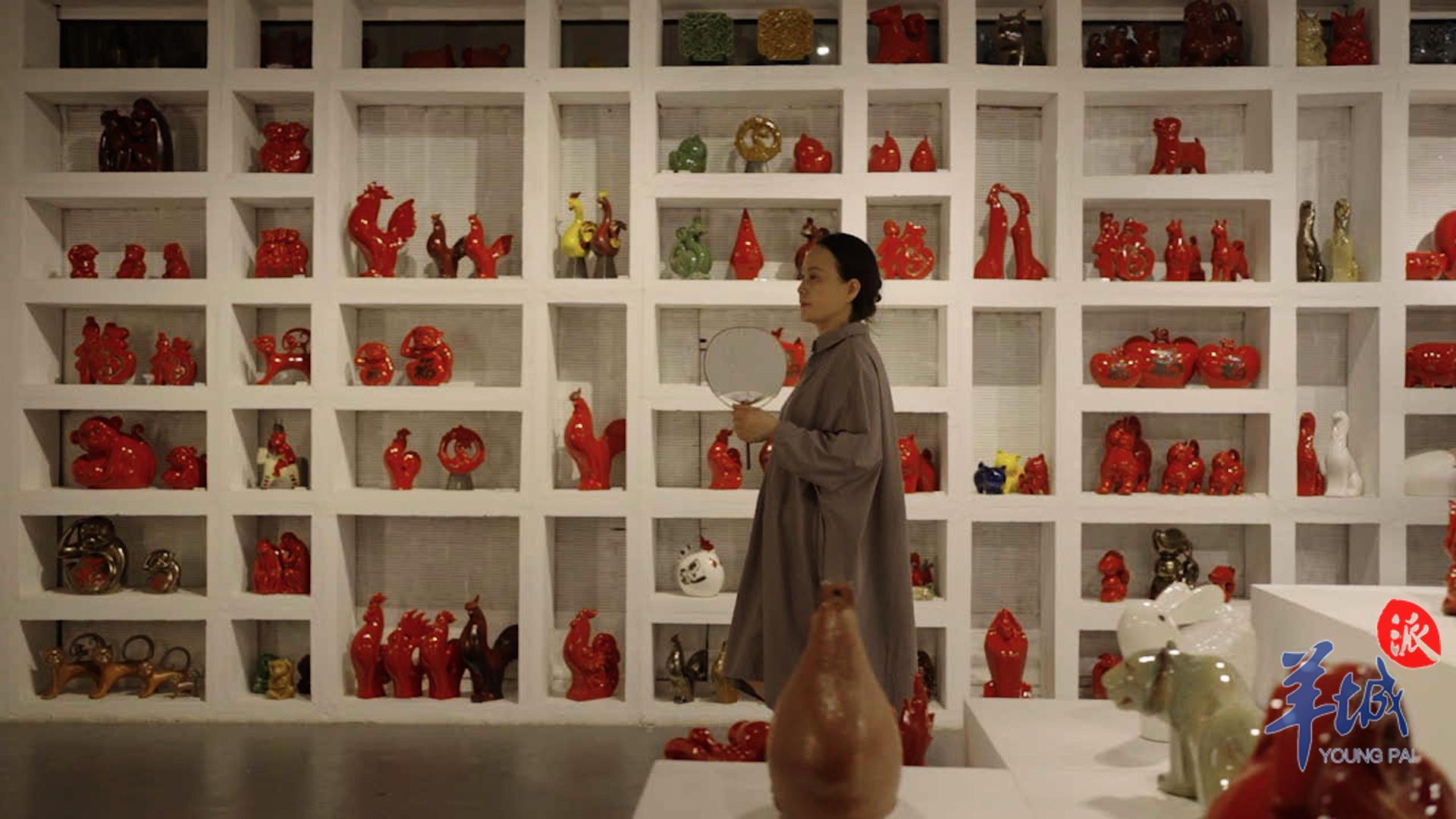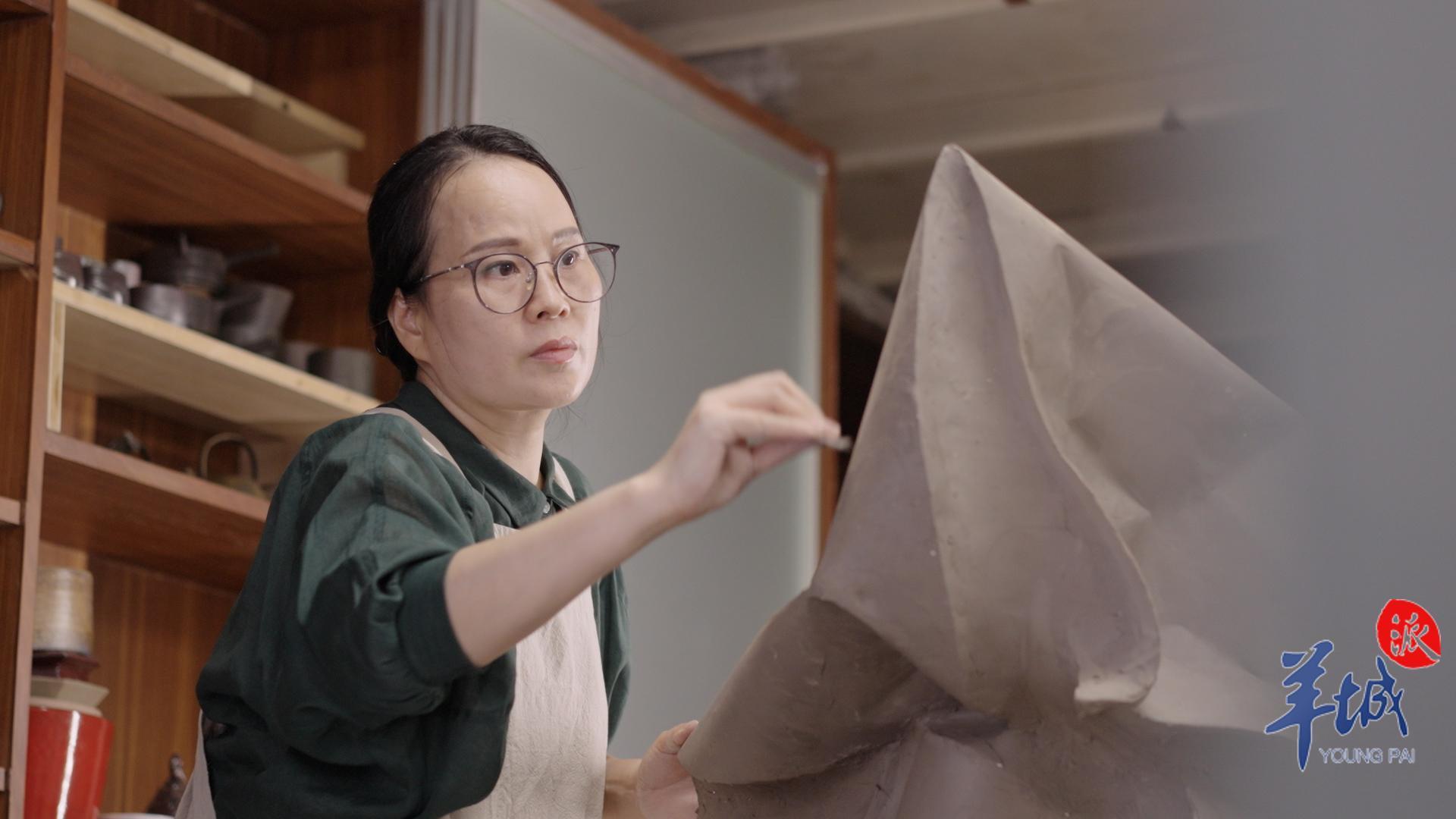Driving through the bustling area of Chancheng District in Foshan, then making a turn, we arrive at an industrial agglomeration zone. The workspace of Fan Anqi, a Chinese master of arts and crafts and ceramic artist, is located in the factory area of Datang Ceramic Company, right here.
In 1989, Fan Anqi graduated from middle school and came to work at a pottery factory in Shiwan, Foshan, from Fujian province, beginning her connection with pottery. Speaking of her first encounter with pottery, Fan Anqi still remembers it vividly. "At that time, I was drawn to the various colorful glazes here, thinking that there are still such beautiful things in this world. This was the first time the word 'pottery' came into my world."
At first, Fan worked in various positions at the pottery factoryto accumulate basic skills, such as throwing, trimming, and glazing. Having been interested in fine arts since childhood, she was eager to read and copy various paintings in her spare time to enrich herself. By chance, Fan met pottery master Zhong Rurongin 1994 and became his disciple, which allowed her to understand what pottery creation was for the first time.
"Seeing Zhong press and knead the clay with his hands, combined with the use of some tools, the mud immediately came to life, as if it was the scene of Nuwa (a mother goddess in China) creating humans from clay in mythology. After shaping and blowing it, a new 'life' appears. That's the vivid feeling pottery has brought me," Fan Anqi said while gesturing.
Fan made rapid progress in professional skills. In 1995, she and several partners opened a pottery factory together. The current factory area was chosen after several relocations by herself, which is close to the city center yet surrounded by green mountains, offering tranquility amidst the hustle and bustle. In her opinion, "mountains convey a unique spirituality."
"My own workspace is located by the mountain, quiet and conducive to creation," Fan's workspace is situated in a corner of the exhibition hall, covering an area of about ten square meters, with various finished or unfinished works displayed on shelves and worktables. "I actually didn't consider too much at that time. I just created following my feelings and emotions."
Foshan is the birthplace of Cantonese opera, and Foshan's ceramic sculptures are mostly inspired by traditional opera. Drawing from this, Fan incorporated opera elements into her early character modeling. She has been constantly pondering how to present the "new Shiwanceramic sculptures" with her own innovative concepts and ideas, leaning towards a natural expression of materials in the modeling. "Clay is soft, resilient, with a natural affinity, which is used to connect humans with clay."
"In traditional Shiwanceramic sculptures, people would use tools to polish the face, making it very smooth, referring to a traditional Shiwan technique. However, I prefer to use my fingers and fingerprints, without any tools, letting the clay reveal itself through a single touch or press."
"Art integrated into life and life becoming artistic is what I have been striving for. Art should be truthful, kind, and beautiful, with contemporary relevance and individuality, as well as inheritance. That is the mission of artists," according to Fan.
【视频】范安琪:只要敢想,陶瓷都可以表达
驱车穿越佛山禅城区的繁华地带,转个弯,来到一片工业聚集区。中国工艺美术大师、陶瓷艺术师范安琪的工作间,设在大唐陶瓷公司厂区中,就是这里。

1989年,范安琪中学毕业后从福建来到佛山石湾一家陶艺厂工作,开启了她与陶艺的缘分。说起第一次接触陶艺的心情,范安琪记忆犹新。“我那时完全被花花绿绿的各种釉色吸引了,心想世界居然还有如此美物,这是第一次有个‘陶’字闯入了我的生命。”
起初,范安琪在陶艺厂里做过拉坯、修坯、上釉等多个工种,积累下基础技艺。从小就对美术感兴趣的她,闲暇时喜欢阅读和临摹各类画作,充实自己。机缘巧合,1994年,范安琪认识了陶艺大师钟汝荣,并拜其为师,这让她第一次领略到什么是陶艺创作。

“看到老师在手上一按一搓,加上一些工具的使用,泥巴马上就鲜活起来,好像神话中女娲抟土成人的场景,捏好后一吹,一个新生命就出现了。陶艺给我带来的就是这种鲜活的感受。”范安琪边比画边说。
范安琪的专业水平提高很快,1995年,她和几个合作伙伴一起开了一个陶艺工厂。现在的厂区是范安琪几度搬迁后选定的,离市中心很近,但背靠青山,闹中取静。在她看来,“山特别有灵性”。
“我自己的工作间就在山边,安静且适合创作。”范安琪的工作间设在展览厅的角落里,十几平方米的样子,柜架和工作台上摆放着各种成型或未成型的作品。“其实那时候我已经没有太多的想法,只是随着心动、随着感情的流露去创作。”

佛山是粤剧的发源地,佛山的瓦脊公仔大多取材于传统戏曲。受此启发,在早期的创作中,范安琪在人物造型上植入戏曲元素。范安琪一直在思考,如何用自己的新观念、新想法,去呈现“新石湾公仔”。她倾向于让材料在造型中自然呈现。“泥土是柔软的,有韧性的,有种天然的亲和力。陶艺是人与泥土的接触,就是用这种亲和力去连接的。”
“传统的石湾公仔,人们会利用工具,一点一点把它的脸抛得很光滑,这是一种石湾传统技法。但我更希望用我的手指和指纹,通过这一抹、一按,让它呈现出来,不需要任何工具的附加。

“艺术生活化、生活艺术化是我一直在努力做的。艺术要有真善美,要有当代性与个性,还要有传承,这就是艺术工作者的使命。” 范安琪说。
文|羊城晚报全媒体记者 周欣怡
视频|彭灏明 戚容源 唐德荣 彭泽祥 暨晴 陈贤宇
译|陈萱
责编 | 王楠
校对 | 周勇









